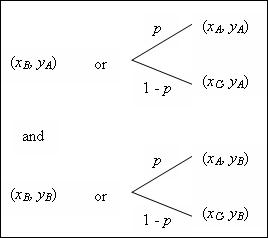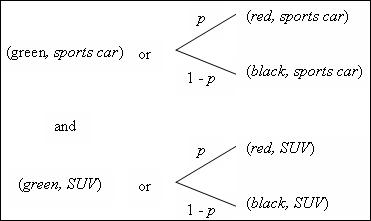Utility independence
From DDL Wiki
In multiattribute utility theory, an attribute set X is utility independent from attribute set Y if the utility for the attributes of set X does not change when the attributes in Y are varied.
The test for utility independence can be found by using the lottery, which is described in multiattribute utility theory. Take an example of two attribute sets of color (red/black/green) and style (sports car/SUV). The designer is indifferent between the certainty of a green sports car and a p chance of a red sports car and a 1-p chance of a black sports car. If the decision maker is also indifferent between the certainty of a green SUV and a p chance of a red SUV and a 1-p chance of a black SUV, with the value of p equal in both cases, then attribute X is utility independent from attribute Y.
This condition is a stronger condition than preferential independence. If two attributes are utility independent then they must be preferentially independent as well, but not vice versa.
References
- Thurston, Deborah L. "Multi-attribute Utility Analysis of Conflicting Preferences." Decision Making in Engineering Design. Ed. Kemper E. Lewis, et al. New York, New York: ASME Press, 2006. 125-133.


